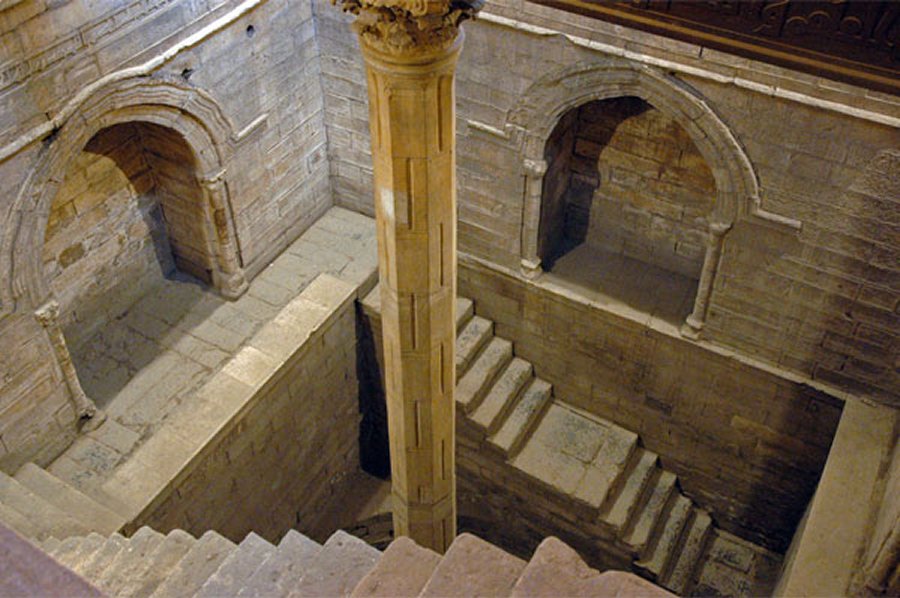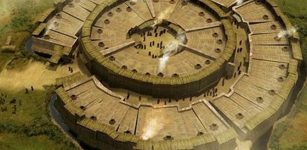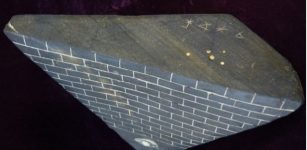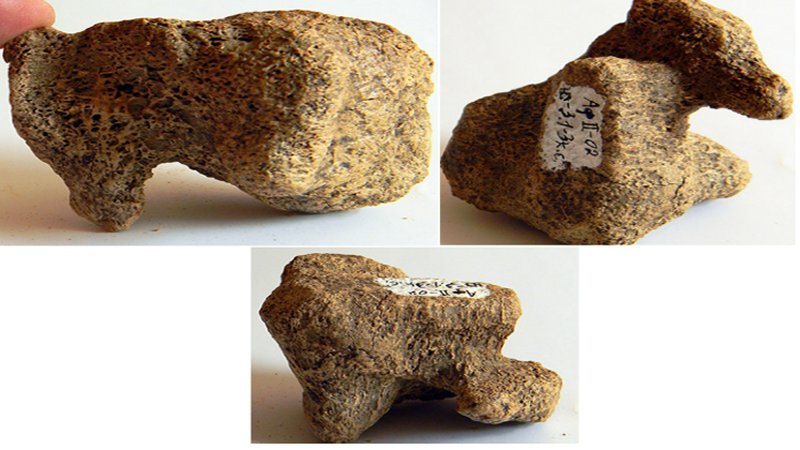5,000-Year-Old Tradition Of Nilometer: Water Measurement Device From Pharaonic Times
MessageToEagle.com – Since ancient times, the Egyptians depended on the Nile’s flood and its regular return for their sustenance. But the flood was unpredictable. Therefore, the ancient Egyptians during the Pharaonic Period began to measure the Nile’s water level in order to better predict the harvest.
This tradition can be traced back to over 5,000 years ago.
The simplest design was a vertical column submerged in the river with marked intervals indicating the depth of the river. Another design was a flight of stairs leading into the river.

The nilometer data was then used by the ancient Egyptian priesthood who ‘mysteriously’ predicted when the flood would occur.
One such unique and historical structure is located on Rhoda Island, in central Cairo. It was constructed in 861AD, on a site, which is thee exact location of a much older structure of this kind.
These water measurement structures continued to be useful up until the modern era when the Nile’s natural flows were disrupted by large water storage reservoirs.
Another historically important nilometer is located on the island of Elephantine in Aswan.

This is probably one of the most interesting structures on the island and one of the earliest known nilometers that were used by the ancient. 90 steps lead steeply down to the river from the entrance, with depth markings along the walls. Elephantine marked Egypt’s southern border and was, therefore, the first place where the onset of the annual flood was detected.
The most elaborate design involved a channel or culvert that led from the riverbank, often running for a considerable distance, and then fed a well, tank, or cistern.
These nilometer wells were most frequently located within the confines of temples, where only the priests and rulers were allowed access.
Egypt’s ancient nilometers have served people a very long time and continued to be used by later civilizations until the 20th century.
Today they are considered rather obsolete. The Aswan dam has the primary goal to regulate the flow of the River Nile, which serves as a lifeline to almost the whole of Egypt.
Copyright © MessageToeagle.com All rights reserved. This material may not be published, broadcast, rewritten or redistributed in whole or part without the express written permission of MessageToeagle.com
Expand for referencesRelated Posts
-
 Huge Molten Iron River Is Moving Rapidly Beneath Our Feet – It’s Heading Towards Europe
No Comments | Jan 11, 2017
Huge Molten Iron River Is Moving Rapidly Beneath Our Feet – It’s Heading Towards Europe
No Comments | Jan 11, 2017 -
 Arkaim: A Scientific Enigma And Anomalous Zone
No Comments | Apr 24, 2014
Arkaim: A Scientific Enigma And Anomalous Zone
No Comments | Apr 24, 2014 -
 Mysterious Artifacts: Glowing Black Pyramid With The Third Eye
No Comments | Sep 21, 2014
Mysterious Artifacts: Glowing Black Pyramid With The Third Eye
No Comments | Sep 21, 2014 -
 Why Was Constantinople Called New Rome?
No Comments | Mar 9, 2020
Why Was Constantinople Called New Rome?
No Comments | Mar 9, 2020 -
 ‘Artificial Trees’ Will Absorb Carbon Dioxide 1,000 Times More Effective Than A Regular Tree
No Comments | Feb 9, 2016
‘Artificial Trees’ Will Absorb Carbon Dioxide 1,000 Times More Effective Than A Regular Tree
No Comments | Feb 9, 2016 -
 Magical Pentagram – A Five Pointed Star And Its Secret Use
No Comments | Jun 15, 2020
Magical Pentagram – A Five Pointed Star And Its Secret Use
No Comments | Jun 15, 2020 -
 12,000 Years Ago Siberian People Possessed Technique To Soften Ivory And Create Toys Or Art Items
No Comments | Jan 6, 2021
12,000 Years Ago Siberian People Possessed Technique To Soften Ivory And Create Toys Or Art Items
No Comments | Jan 6, 2021 -
 Is Death A Dream Or Illusion?
No Comments | Mar 29, 2015
Is Death A Dream Or Illusion?
No Comments | Mar 29, 2015 -
 Ancient Civilizations Invented Alcohol 10,000 Years Ago
No Comments | Sep 13, 2016
Ancient Civilizations Invented Alcohol 10,000 Years Ago
No Comments | Sep 13, 2016 -
 8 Clues That Suggest Parallel Universes Do Exist
No Comments | Nov 5, 2017
8 Clues That Suggest Parallel Universes Do Exist
No Comments | Nov 5, 2017
